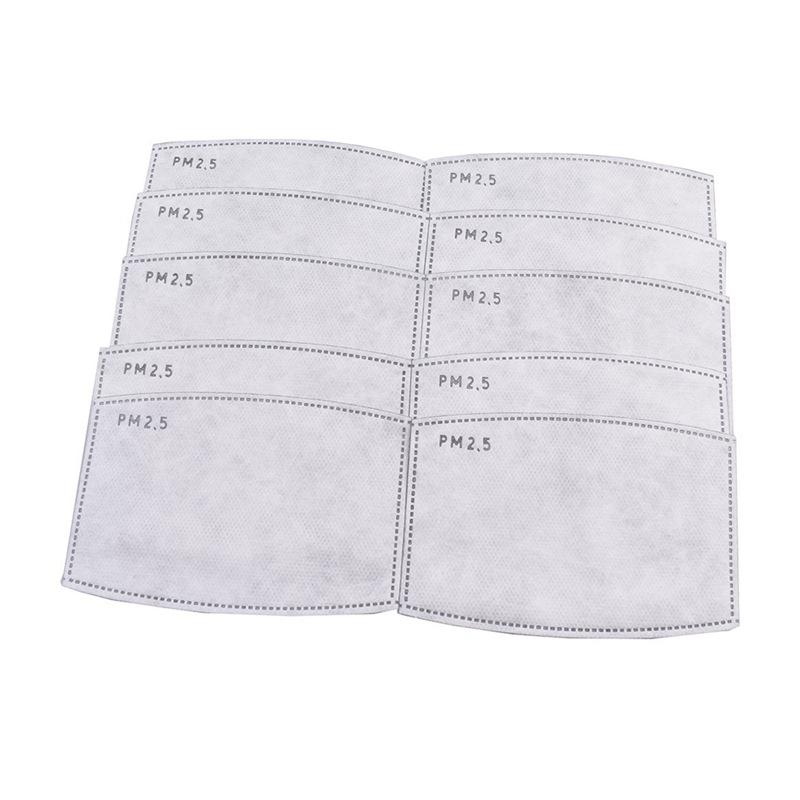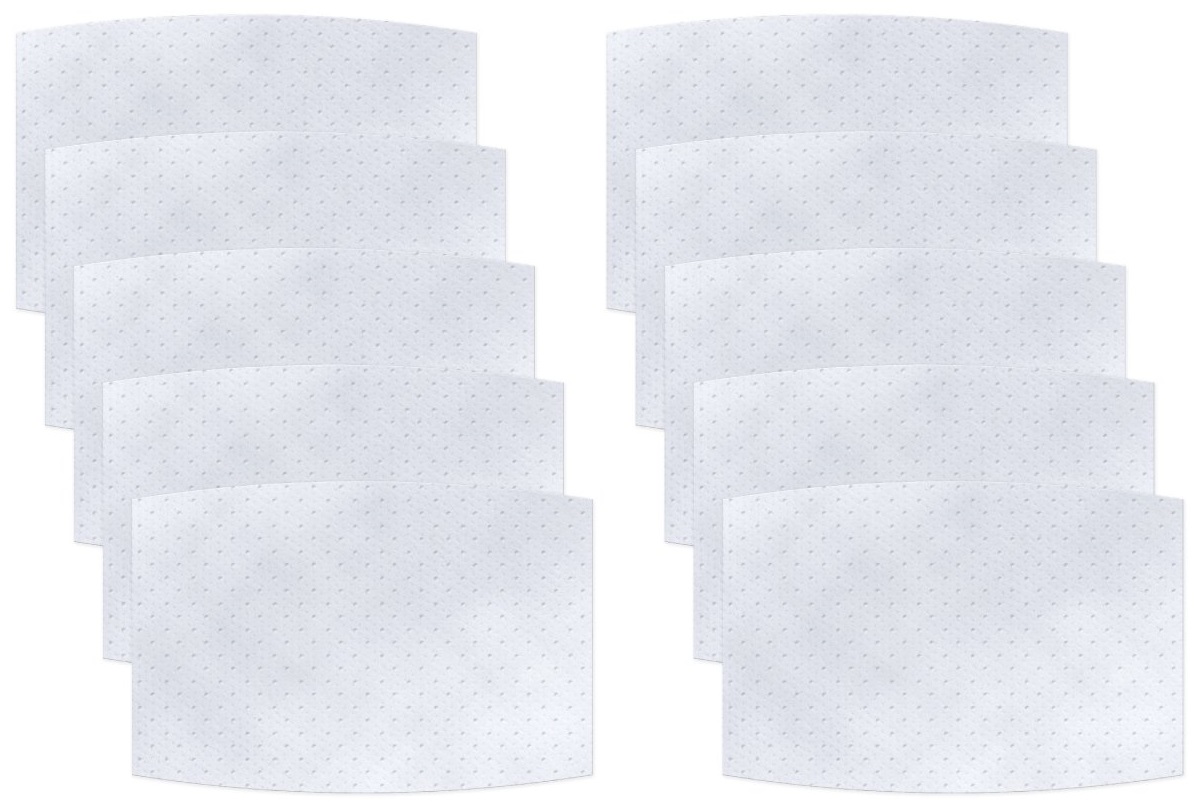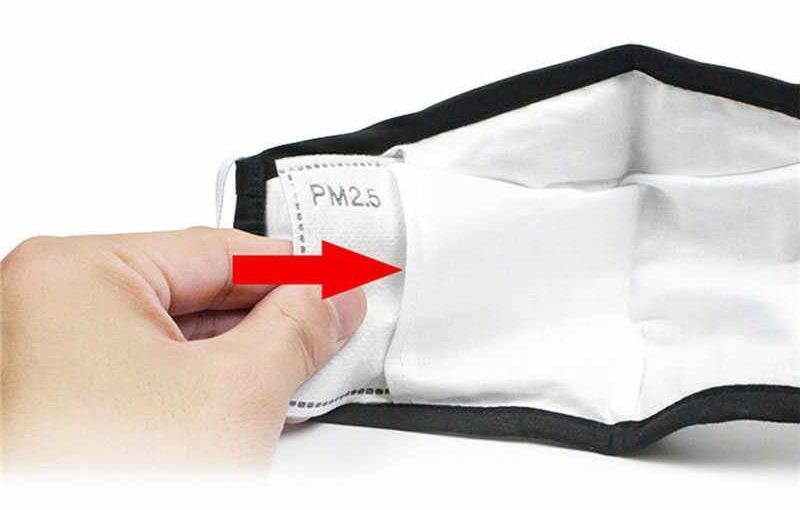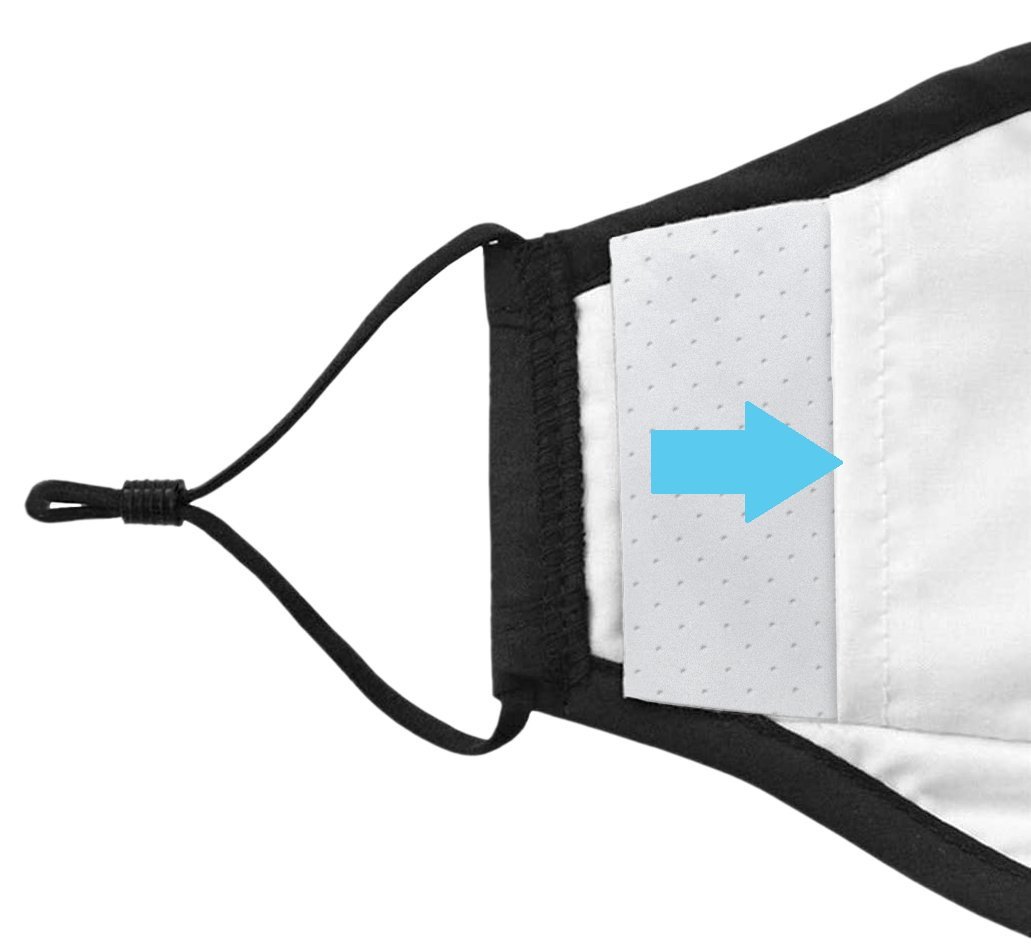We stock two types of mask filters:
- PM2.5 filter – nonwoven polypropylene with activated carbon
- Filti filter – nonwoven polypropylene, with high-performance polyurethane polymer nanofiber
We regularly field questions about the difference between these two types of replaceable filters for masks. We would like to highlight the key differences and similarities in order for our customers to make informed choices about these two products.
What are PM2.5 and Filti filters?
Filti and PM2.5 filters are flat rectangular inserts that can be inserted into the inner layers of mask to improve filtration efficiency. They are not meant to be washed. They are meant to be replaced after a certain period of recommended use time. Both filters have found use as masking options during the COVID-19 pandemic. However, both have pre-pandemic origins.
PM2.5 filters were originally developed to protect against small particulate matter less than 2.5 microns wide (by comparison, human hair is about 50-70 microns). Hence they get their name, PM2.5, from the size of particulate matter (PM) that they filter for. PM2.5 from pollution, chemicals and other sources have been shown to be detrimental to health. These filters found application particularly for allergic individuals or those who live in heavily air-polluted environments. They owe their effectiveness to a five-layer combination of spunbond nonwoven polypropylene, meltblown fabric and activated carbon layer that provides electrostatic trapping of PM2.5 particles.
Filti material was developed and engineered in the USA originally meant for HVAC and commercial filtration applications. When the pandemic set in, the company that produces Filti began to mass-produce Filti material for mask making and filter making. Filti material has been tested extensively and has consistently emerged as one of the best filtration materials other than N95 masks. A recent study found that Filti material had an 86% efficiency at filtering small particle aerosols and large droplet (N95 masks tested in the same study performed at 98%).


What are they made of?
Filti is made of three layers:
- Layer 1: Polypropylene spunbond nonwoven
- Layer 2: Nanofiber fine filtration layer (polyurethane polymer)
- Layer 3: Polyester nonwoven layer
PM2.5 is made up of five layers
- Layers 1 and 5: Spun-bound polyester material that filters out larger particles
- Layer 3 (middle): activated carbon layer. Traps particulate matter via an adhesion process.
- Layers 2 and 4: high-efficiency melt-blown nonwoven polypropylene that can filter small substances.
Where are they manufactured?
PM2.5 filters are manufactured in China.
Filti filters are manufactured in Canada using material made in the USA.
What about filtration efficiency?
PM2.5 filters filter out particulate matter up to 2.5 microns with 95% efficiency.
Filti filters filter out particulate matter up to 0.3 microns with 95% efficiency.
How long can each filter last?
PM2.5 – it is recommended to use these filters for up to a maximum of 12 hours of use.
Filti – it is recommended to use these filters for up to a maximum of 8 hours of use.
How do I use each filter?
PM2.5 – Insert into your masks filter pocket. It does not matter which side faces inward or outward.

Filti – Insert into mask pocket so that deeper bond points and loftier texture faces outwards, and shallower bond points and extra texture faces inwards.


Summary
The Filti filter is higher in quality because it is manufactured and tested to have a superior filtration efficiency. It is made in Canada and has more studies behind it in regards to its filtering effectiveness. The price reflects this superiority in quality. The PM2.5 filter still works in filtering particles up to the 2.5 micron range, which is still pretty small (human hair is 50-70 microns). Having the PM2.5 filter in a cotton mask provides much better filtration performance than using the cotton mask alone.
Links:
